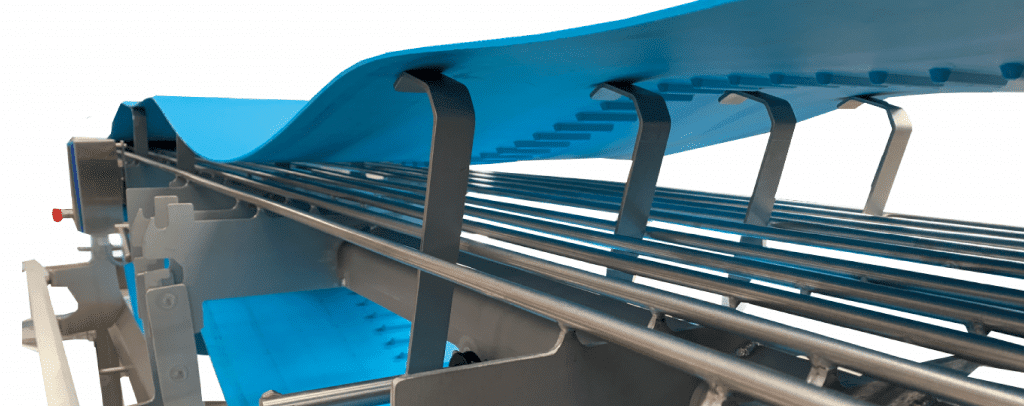In the food industry, conveyors play a crucial role in facilitating the movement of products throughout the production process. This guide details the best practices for cleaning and maintaining your conveyors to ensure their longevity and efficiency.

1. Importance of regular cleaning and maintenance
Regular cleaning of conveyors is essential to prevent the build-up of debris and contaminants. Over time, these various foreign bodies can lead to breakdowns, premature wear and safety problems. Proper maintenance not only extends equipment life, but also maintains high standards of hygiene, particularly crucial in the food industry.
Cleaning frequency depends on the type of products conveyed and production conditions. In the food industry, daily cleaning is recommended to avoid cross-contamination and comply with food safety standards. In other sectors, weekly or monthly cleaning may be sufficient.
2. Cleaning methods
Different methods can be used for cleaning, depending on requirements. Dry cleaning is useful for removing dust and light debris, using brushes, compressed air blowers or industrial vacuum cleaners. Wet cleaning is often necessary to remove more stubborn residues, using hot water and suitable detergents, taking care to rinse thoroughly to remove any chemical residues. For more complex systems, cleaning in place (CIP) can be used. This automated method enables equipment to be cleaned without dismantling, using pressurized jets of water and detergent.
3. Cleaning steps
Cleaning steps include stopping and securing the conveyor to prevent accidents during cleaning. Next, manual pre-cleaning of large residues is carried out before applying cleaning solutions. Detergent is applied according to the manufacturer’s recommendations, followed by a thorough rinse to remove any detergent residue.
4. Preventive maintenance
Preventive maintenance is just as crucial as cleaning. Good practice includes regular visual inspections for signs of wear or damage. Regular lubrication of moving components reduces friction and wear. It’s important to check conveyor belt alignment and adjust if necessary to avoid uneven wear, as well as to monitor and adjust belt tension to ensure optimum operation. Worn or damaged parts must be replaced immediately to avoid more serious breakdowns.
5. Staff training
Make sure your staff is well trained in cleaning and maintenance procedures. Well-informed employees are the key to keeping equipment in perfect working order.
Regular cleaning and maintenance of conveyors is essential to ensure their performance and longevity. By following these best practices, you can minimize downtime, reduce maintenance costs and maintain high standards of hygiene and safety. Please contact us for personalized advice or to find out more about our conveyor solutions.
